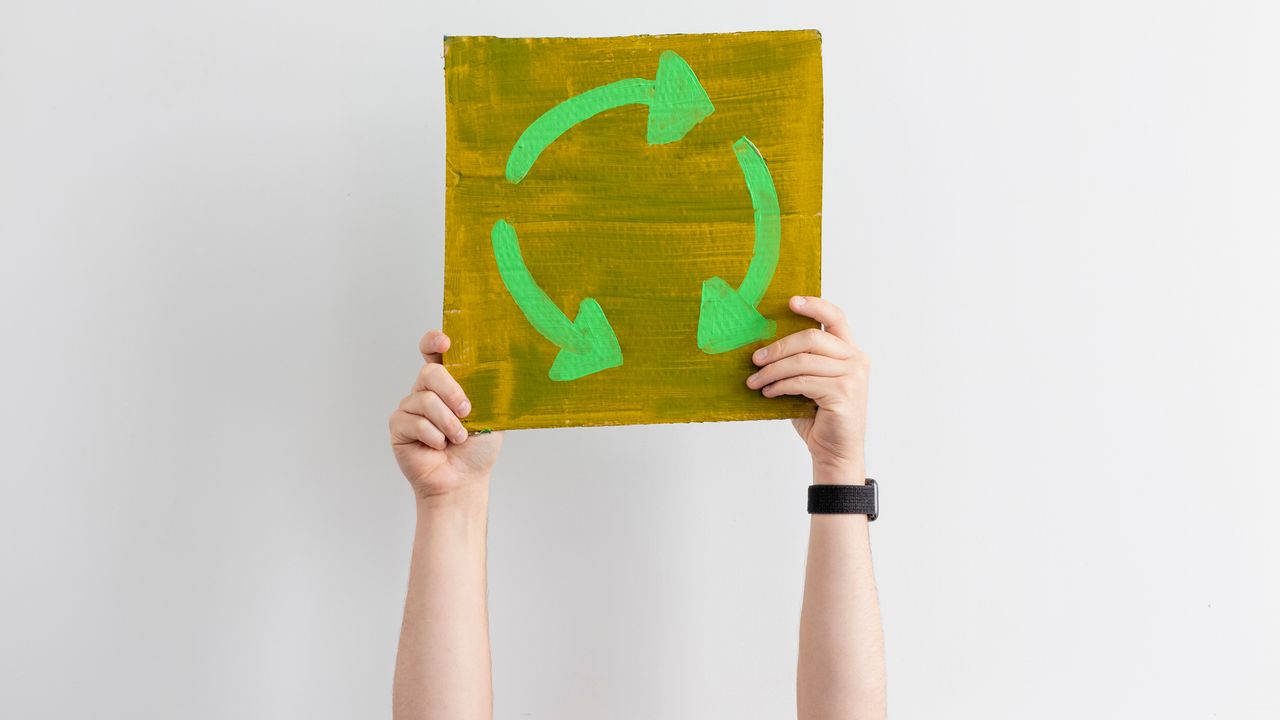
The Future of Zero Waste Lies in the Circular Economy

The Future of Zero Waste Lies in the Circular Economy
Complete the form below and we will email you a PDF version of“零废物的未来在于循环经济”
Zero waste is on the rise, and while many people still associate the movement with the mason jar challenge popularized by Instagram influencers and social media mavens, there’s a whole lot more behind its increased popularity. In fact, it is underpinned by nothing less than a dramatic restructuring of our entire “take, make, trash” economy.
Many people understand this restructuring as thecircular economy参与零浪费运动意味着采用许多循环概念。但是,尽管两者都共享一系列基本面,但它们在几种方面也有所不同。在这里,我们探讨了这两个概念,以及为什么零浪费运动的未来在于采用更大的循环。
零废物如何实现循环经济概念
零浪费的运动和循环经济都有这样的观念,即为了停止浪费的影响,它必须是从我们现有的系统(或循环)中设计出来的,同时还必须恢复宝贵的资源并确保污染元素不在环境之外。
但是,对于零浪费的概念,这意味着要专注于全球一致的层次结构,该层次结构扩展了已经广泛熟悉的三卢比。目前,Zero Waste International Alliancedefines this hierarchy in the following way:
- 重新考虑/重新设计产品和材料以减少浪费
- Reduce食用新产品和材料
- 重用处置产品和材料
- Recycle/Compostproducts and materials and avoid landfilling
- 恢复无法回收的产品的材料
- Manage residualsusing best possible approach from above
- 不可接受焚化和填充产品和材料
另一方面,循环经济采取了一种更加系统的方法来设计闭环系统的方式,以促进资源的循环,以设计废物和污染,使整个寿命的产品和材料保持在整个生命周期中以及再生天然系统。
艾伦·麦克阿瑟基金会定义这样:
“restorative and regenerative by design, and aims to keep products, components, and materials at their highest utility and value at all times. … It is a continuous positive development cycle that preserves and enhances natural capital, optimizes resource yields, and minimizes system risks by managing finite stocks and renewable flows.”
Clearly, there is plenty of shared ground between the two concepts, and the zero-waste hierarchy itself acts as a circular guide to waste management. Additionally, both concepts look towards the cradle-to-cradle concept (as opposed to cradle-to-grave), going further than simply dealing with waste at the end point and focussing, instead, on addressing waste generation at the source—i.e., the point of manufacture.
但是,由于循环经济概念早于几十年的零浪费运动,因此无法低估其对零浪费思维的影响。如今,可以公平地表明,零浪费运动是循环思维的一个分支,最著名的是针对想要减少浪费的消费者和企业,而循环经济涵盖了我们整个现有的消费系统。
循环经济体如何改善零废物
有趣的是,零浪费运动对主流的吸引力实际上可能是其最大的批评者。随着消费者对更环保产品的需求增加,企业对满足需求的兴趣增加。始终,这意味着某些产品比其他产品更“环保”,并且如果没有仔细的监管和监视这些主张,我们无法知道哪种产品最适合环境。
例如,最近的零废物产品的扩散有可能创建greenwashing problems生产产品的地方无法解决未来的影响。仅将产品标记为“零废物”以吸引企业和消费者是不够的,无论是通过良好的意图还是简单地用作独特的卖点,整合更严格的圆形方法必须成为优先事项,如果我们要真正实现零废物。
生物燃料是一个很好的例子,如今用于创建这种“绿色”产品的棕榈油种植园是森林砍伐的主要原因。在表面上,这种取代化石燃料的努力看起来像是一个好主意,但现实是,现在这是一个真正的循环方法可以避免的重要生态问题。
In addition to issues that fail to take future impacts into account, the zero-waste movement is, arguably, still much too reliant on disposable mindsets. In essence, this means that too many products are manufactured that do not address the single-use issue, placing unnecessary demands on waste management infrastructure.
For example, bamboo toothbrushes do a wonderful job of reducing the每年在美国每年填埋垃圾填埋场的十亿左右塑料牙刷单独使用简单的材料来解决巨大的废物问题。但是,快速前进的十年左右,几十亿个竹牙刷几乎是一个更好的情况,因为即使改善了回收基础设施,很大一部分仍将在垃圾填埋场中有助于甲烷排放。
真正的循环思维可以改善这些产品。例如,制造单独的尸体和可互换的头部可以大大减少产生的废物量。更好的是,返回自然种植的咀嚼棒或其他需要更少制造投入的产品,同时还要专注于自然可再生资源。
The same could be said of paper-based water bottles to replace plastic, or compostable packaging for goods that, in fact, could just as easily be distributed in without packaging entirely. The zero-waste movement could lean on the circular economy further by promoting reusable water bottles and easily accessible water dispensers or, for example, by equipping supermarkets with bulk dispensers that consumers can use to refill their own containers time and time again.
The future of zero waste
在这一点上,值得承认零浪费的运动has achieved. It has bought the concept of proper waste management and the need to reduce waste at all levels to the mainstream. It has fuelled growth in more sustainable products and provided consumers with access to more choice. It has also aimed to set an easily relatable yet comprehensive hierarchy
但是,通过基于循环经济概念采用更高层次的思维,零废物运动仍然可以增长并变得越来越有效。实际上,它有可能成为朝着循环为基础的真正可持续经济的前部运动。
最后,随着循环概念的采用越来越多,零浪费的运动可以摆脱其批评家,他们将其标记为另一种形式的绿化形式,不仅创造了一种运动,不仅可以促进可持续的产品和习惯,而且还不断发展其思维方式闭环系统对每个人都受益。
关于作者:
香农·伯格斯特罗姆(Shannon Bergstrom)是利兹绿色助理, TRUE waste advisor. She currently works atRTS是一家技术驱动的废物和回收管理公司,作为可持续性运营经理。香农就可持续的废物实践与各行业的客户协商。


